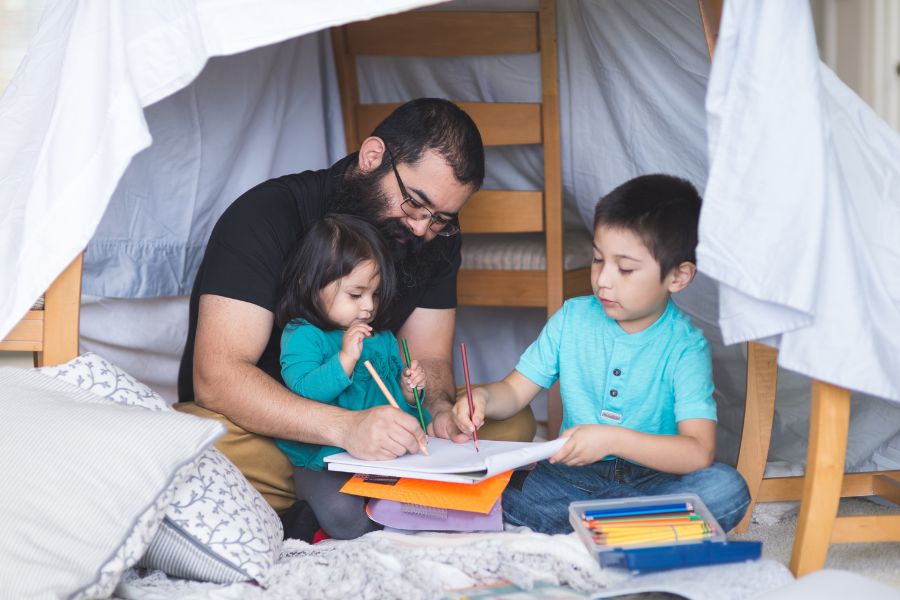Self-management refers to the ability to regulate one’s emotions, thoughts, and behaviors effectively, leading to better decision-making and overall well-being. These skills empower children to navigate challenges and thrive in various aspects of their lives.
Practicing Self-Management Skills at Home
We use Words to Live By to help kids learn the fundamental skills of social emotional learning. Words to Live By breaks down the competency into two lessons:
-
Life’s full of surprises that make me feel different ways: understand the different feelings that arise when faced with challenges and how to stay calm
-
If I can control myself, I’ll have much better days: learn to control yourself and think before you act
Understanding Different Feelings and Staying Calm
Tip #1: Discuss Triggers and Emotional Patterns
Talk about different situations that trigger heightened emotions and how everyone responds when those situations happen.
For example, when discussing a recent incident where someone in the family felt upset or frustrated, a parent or caregiver might say, “Remember when we had that disagreement about sharing toys yesterday? Let’s talk about how we each felt during that moment and how we reacted.” This approach encourages open dialogue, empathy, and understanding of each family member’s emotions and responses in challenging situations.
Tip #2: Create Safe Spaces
Have each family member identify a safe place in the home where they can go when they need time and space to manage their emotions. Add items to that space they can use to help calm themselves down.
A child might choose a cozy corner in their room, while a parent might opt for a quiet spot in the living room. Items to help regain composure could be soft blankets, stress balls, calming essential oils, soothing music, or mindfulness coloring books. Encouraging each family member to personalize their safe space and equipping it with tools for relaxation can promote self-awareness and self-regulation during times of emotional intensity.
Learning Self-Control and How to Think Before You Act
Tip #3: Learn Different Coping Techniques
Determine ways you are able to remain calm during big emotions and share those coping techniques with each other.
For example, parents can encourage children to identify coping techniques, such as deep breathing exercises, taking a walk to cool down, or taking a few minutes to calm themselves in a safe space.
Eat meals together as a family and share recent experiences that brought about strong emotions and how you responded. Use that time to give feedback to one another for staying in control of emotions and responses.
For instance, if a child shares that they felt frustrated when their sibling took their toy without asking, the family can discuss strategies the child used to manage their frustration, such as taking deep breaths or using “I” statements to express their feelings. Other family members can then provide positive feedback and reinforcement for these effective coping strategies, encouraging the child to continue using them in similar situations.













